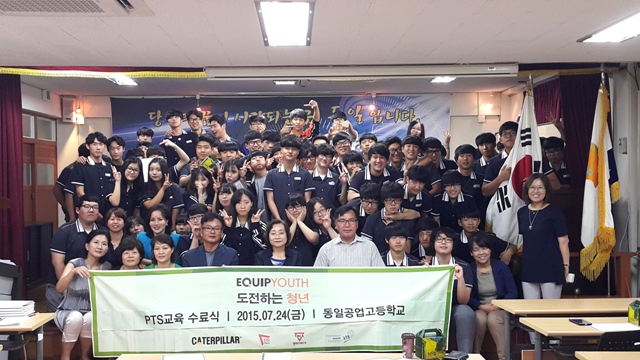Context: The Republic of Korea has an overall unemployment rate of 3.1 per cent. The youth (aged 21–25) unemployment rate has been rising gradually, for instance, increasing from 7.9 in 2001 to 9.8 per cent in 2016. Overall, 7.7 per cent of the country’s youth are actively seeking employment or attending training programmes. However, 25 per cent of college graduates under the age of 30 are currently not in education, employment or training (NEET). Rather than seeking employment, young people in the Republic of Korea tend to pursue further education with the hope of increasing their employability, which in turn translates to a less active labour force. Moreover, youth with different levels of qualifications, educational backgrounds and skill sets all compete for the same jobs. Despite the high amount of competition, young people often lack industry-specific skills which are in high demand; this has resulted in high rates of unemployment across the country. Furthermore, there is a lack of support available for youth with disabilities or those from underprivileged families, who already face challenges in finding a suitable job.
Implementation of programme/ initiative: The Caterpillar Foundation and the International Youth Foundation (IYF) started the EquipYouth programme in 2012, with the goal of increasing youth employability and entrepreneurship across the world. EquipYouth is a global initiative, targeting 8,000 youth across 12 countries, with a budget of USD 1.1 million. In 2013, the programme expanded its reach to the Republic of Korea, aiming to equip youth with relevant language assistance, technical skills training, internship opportunities and work experience as well as direct placement support. EquipYouth tailored the programme to address the needs and demands of local youth according to each country. In the Republic of Korea, to better prepare youth, including those with disabilities, to secure a job, the programme focused on providing training opportunities both industry-specific and related to improving soft-skills. The programme ran for 3 years between 2013–2016, involving a total of 480 disadvantaged youth from the city of Pyeongtaek.
Main challenges: One of the main challenges faced by the programme was reaching a wide spectrum of young people. While its aim was to support a large cohort, once operations were rolled out the reach was limited to disadvantaged youth from low income families. This group is arguably in need of the most support, yet youth unemployment affects those from all socioeconomic backgrounds and is a major challenge facing the republic of Korea. Moreover, the programme only involved students from the small city of Pyeongtaek, and thus was unable to provide assistance to those outside of this area.
Results achieved: As of 2015, a total of 348 youth were provided with training and resources in areas such as business management and the IT, automotive and construction industries. These resources proved to be of great value, as 40 per cent of EquipYouth’s participants managed to secure employment immediately after the completion of the programme.
Moving Forward: During its operations, the programme had potential to further reduce unemployment rates by providing youth with the appropriate training and knowledge that were in high demand among employers. While the programme provided training to disadvantaged youth in Pyeongtaek, to expand its reach, it would have been essential to engage youth from other regions in the country. In addition, it would have been also necessary to increase awareness among youth regarding the importance of obtaining industry-related skills and experience rather than relying solely on the pursuit of further education.
Replicability: The EquipYouth programme can serve as a guideline for policymakers wishing to target youth in nations with high rates of unemployment. The fundamental reason for its success was that the programme was able to first identify how to bridge the gap between employers and youth by working closely with local companies and industry partners. After identifying that employers were seeking candidates with greater vocational and soft skills, the programme facilitated a variety of training programmes to equip youth with the necessary experience and skill set to be better placed in finding jobs.
Acknowledgement:
This good practice was kindly prepared by Ms. Megan Sim Wan Qi.
References:
https://www.iyfnet.org/library/equipyouth-global-fact-sheet
https://www.iyfnet.org/initiatives/equipyouth
https://www.caterpillar.com/en/map-locations/east-asia/title-28.html
https://www.iyfnet.org/library/equipyouth-south-korea-fact-sheet
http://m.blog.daum.net/so1637/18319460
Project Details
Date: October 28, 2019
